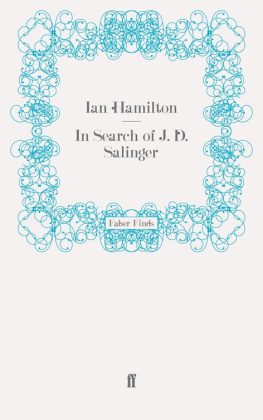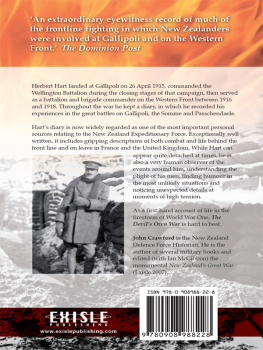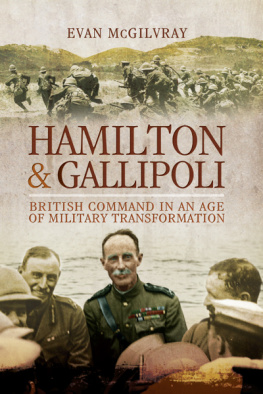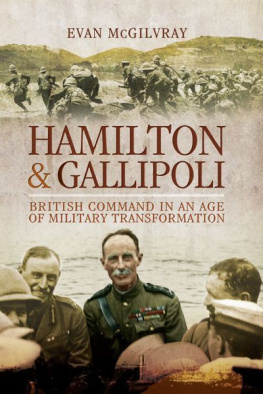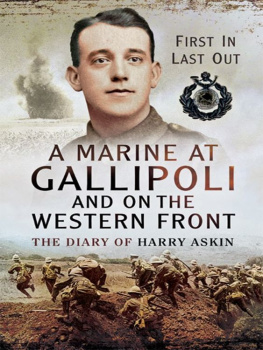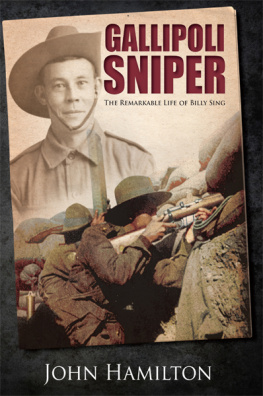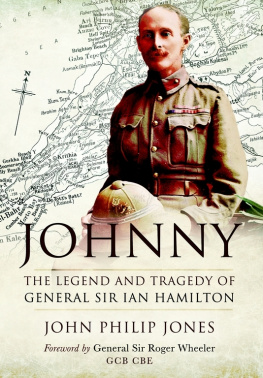Ian Hamilton - Gallipoli Diary, Volume II. (WWI Centenary Series)
Here you can read online Ian Hamilton - Gallipoli Diary, Volume II. (WWI Centenary Series) full text of the book (entire story) in english for free. Download pdf and epub, get meaning, cover and reviews about this ebook. year: 2016, publisher: Read Books Ltd, genre: History. Description of the work, (preface) as well as reviews are available. Best literature library LitArk.com created for fans of good reading and offers a wide selection of genres:
Romance novel
Science fiction
Adventure
Detective
Science
History
Home and family
Prose
Art
Politics
Computer
Non-fiction
Religion
Business
Children
Humor
Choose a favorite category and find really read worthwhile books. Enjoy immersion in the world of imagination, feel the emotions of the characters or learn something new for yourself, make an fascinating discovery.

- Book:Gallipoli Diary, Volume II. (WWI Centenary Series)
- Author:
- Publisher:Read Books Ltd
- Genre:
- Year:2016
- Rating:5 / 5
- Favourites:Add to favourites
- Your mark:
- 100
- 1
- 2
- 3
- 4
- 5
Gallipoli Diary, Volume II. (WWI Centenary Series): summary, description and annotation
We offer to read an annotation, description, summary or preface (depends on what the author of the book "Gallipoli Diary, Volume II. (WWI Centenary Series)" wrote himself). If you haven't found the necessary information about the book — write in the comments, we will try to find it.
Gallipoli Diary, Volume II. (WWI Centenary Series) — read online for free the complete book (whole text) full work
Below is the text of the book, divided by pages. System saving the place of the last page read, allows you to conveniently read the book "Gallipoli Diary, Volume II. (WWI Centenary Series)" online for free, without having to search again every time where you left off. Put a bookmark, and you can go to the page where you finished reading at any time.
Font size:
Interval:
Bookmark:


In Two Volumes
1914 | |
28th June | Franz Ferdinand Assassinated at Sarajevo. |
29th June | Austro-Hungary send despatch to Vienna accusing Serbian complicity in the killing. |
5th July | Kaiser Wilhelm promises German support for Austria against Serbia. |
20th July | Austria-Hungary sends troops to the Serbian frontier. |
25th July | Serbia mobilises its troops, Russia sends troops to the Austrian frontier. |
28th July | Austria-Hungary Declares war on Serbia. |
29th July | Austrians bombard Belgrade and German patrols cross the French border. Britain warns it cannot remain neutral. |
1st August | Germany declares war on Russia. Italy and Belgium announce neutrality. French mobilisation ordered. |
3rd August | Germany declares war on France and invades Belgium (Schlieffen plan). Great Britain mobilises. |
4th August | Britain declares war on Germany and Austria-Hungary (after ultimatum to stand down). US declares neutrality. Germany declares war on Belgium. |
6th August | First British casualties with the HMS Amphion sunk by German mines in the North sea. 150 men dead. |
7th August | First members of the BEF (British Expeditionary Force) arrive in France. |
11th August | Start of enlisting for Kitcheners New Army Your King and Country Need You. |
20th August | Brussels is evacuated as German troops occupy the city. |
23rd August | The BEF started its retreat from Mons. Germany invades France. |
26th August | Russian army defeated at Tannenburg and Masurian Lakes. BEF suffers over 7000 casualties at the Battle of Le Cateau forced to retreat. |
6th September | Battle of the Marne starts; checks German advance, but at the cost of 13,000 British, 250,000 French and 250,000 German casualties. |
19th October | First Battle of Ypres. |
29th October | Turkey enters the war (on Germanys side). |
22nd November | Trenches are now established along the entire Western Front. |
8th December | Battle of the Falkland Islands. |
1915 | |
19th January | First Zeppelin raid on Britain (Great Yarmouth and Kings Lynn killing 5). |
18th February | Blockade of Great Britain by German U-boats begins. All vessels considered viable targets, including neutrals. |
22nd April | Second Battle of Ypres begins Widespread use of poison gas by Germany. |
25th April | Allied troops land in Gallipoli. |
2nd May | Austro-German offensive on Galicia begins. |
7th May | The Lusitania is sunk by a German U-Boat creating US/ German diplomatic crisis |
23rd May | Italy declares war on Germany and Austria |
31st May | First Zeppelin raid on London, killing 35 and shaking morale. |
30th June | German troops use flamethrowers for the first time, against the British at Hooge, Ypres. |
5th August | Germany captures Warsaw from the Russians. |
21st August | Final British offensive in the Dardanelles (Scimitar Hill, Gallipoli). They lose, and suffer 5000 deaths. |
25th September | Start of the Battle of Loos and Champagne. The British use gas for the first time, but the wind blows it over their own troops, resulting in 2632 casualties. |
Font size:
Interval:
Bookmark:
Similar books «Gallipoli Diary, Volume II. (WWI Centenary Series)»
Look at similar books to Gallipoli Diary, Volume II. (WWI Centenary Series). We have selected literature similar in name and meaning in the hope of providing readers with more options to find new, interesting, not yet read works.
Discussion, reviews of the book Gallipoli Diary, Volume II. (WWI Centenary Series) and just readers' own opinions. Leave your comments, write what you think about the work, its meaning or the main characters. Specify what exactly you liked and what you didn't like, and why you think so.


